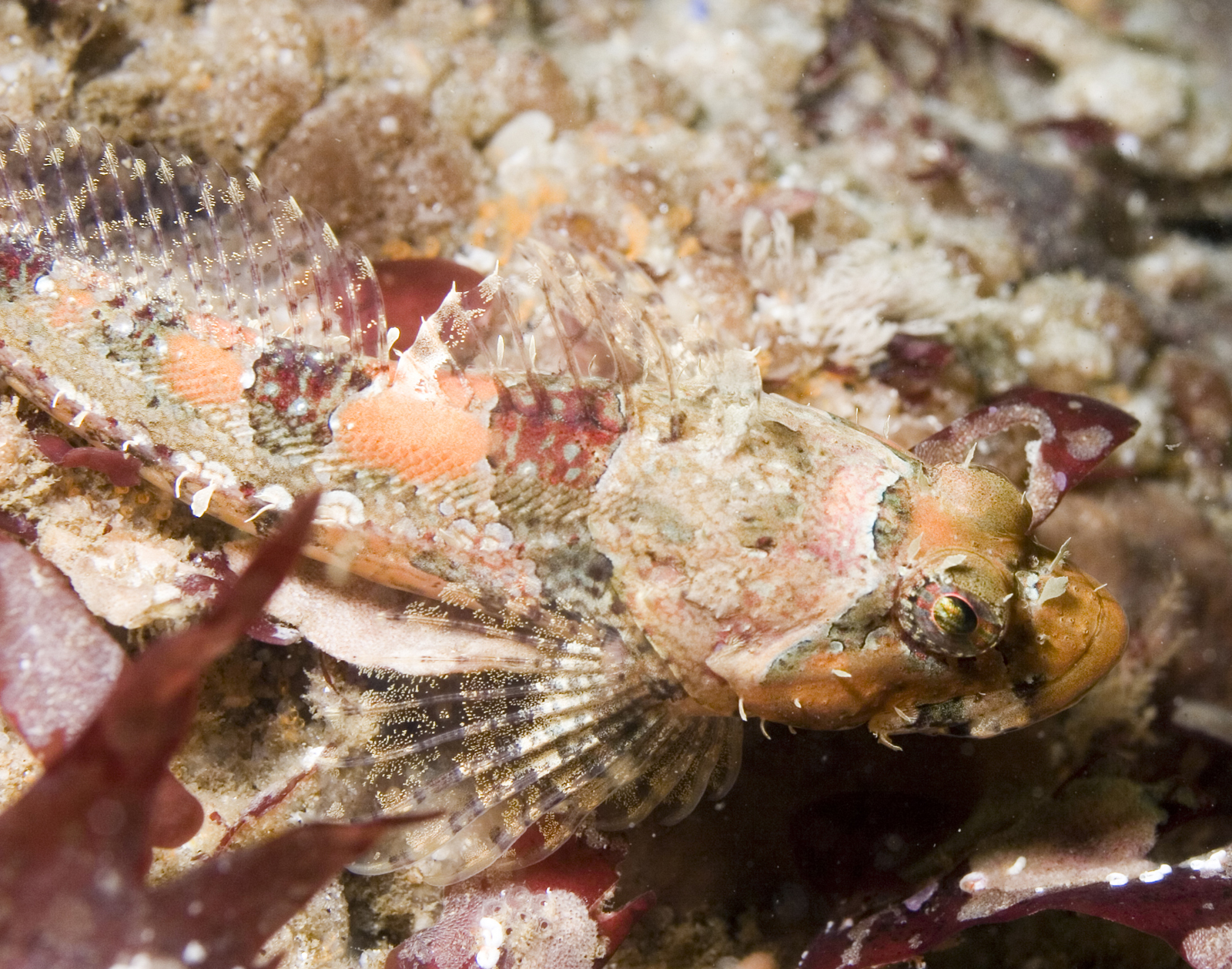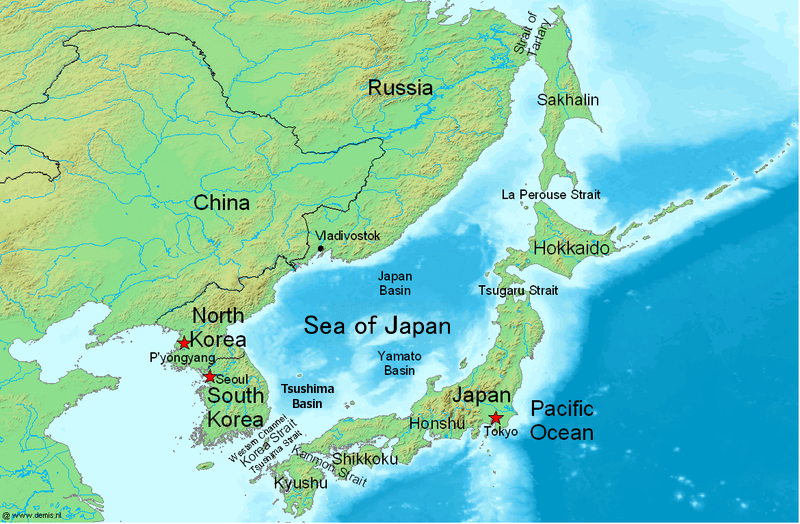|
Atopocottus
''Atopocottus'' is a monospecific genus of marine ray-finned fish belonging to the family Cottidae, the typical sculpins. Its only species is ''Atopocottus tribranchius'' which is found in the Sea of Japan where it is only known from the waters off of Niigata Prefecture is a Prefectures of Japan, prefecture in the Chūbu region of Honshu of Japan. Niigata Prefecture has a population of 2,131,009 (1 July 2023) and is the List of Japanese prefectures by area, fifth-largest prefecture of Japan by geographic area .... This species grows to SL. References * Cottinae Monotypic ray-finned fish genera Fish of Japan Taxa named by Rolf Ling Bolin Monotypic marine fish genera {{Cottidae-stub ... [...More Info...] [...Related Items...] OR: [Wikipedia] [Google] [Baidu] |
Cottidae
The Cottidae are a family of fish in the superfamily Cottoidea, the sculpins. It is the largest sculpin family, with about 275 species in 70 genera.Kane, E. A. and T. E. Higham. (2012)Life in the flow lane: differences in pectoral fin morphology suggest transitions in station-holding demand across species of marine sculpin. ''Zoology'' (Jena) 115(4), 223–32. They are referred to simply as cottids to avoid confusion with sculpins of other families. Cottids are distributed worldwide, especially in boreal and colder temperate climates. The center of diversity is the northern Pacific Ocean. Species occupy many types of aquatic habitats, including marine and fresh waters, and deep and shallow zones. A large number occur in near-shore marine habitat types, such as kelp forests and shallow reefs. They can be found in estuaries and in bodies of fresh water. Most cottids are small fish, under in length. The earliest fossil remains of cottids are otoliths potentially assignable to ... [...More Info...] [...Related Items...] OR: [Wikipedia] [Google] [Baidu] |
Cottinae
Cottinae is a subfamily of ray-finned fishes belonging to the Family (biology), family Cottidae, the typical sculpins. The subfamily has species throughout the northern hemisphere in both marine and freshwater habitats. Genera The following genera are included within the subfamily Cottinae: References Cottidae Taxa named by Charles Lucien Bonaparte Ray-finned fish subfamilies {{Cottidae-stub ... [...More Info...] [...Related Items...] OR: [Wikipedia] [Google] [Baidu] |
Rolf Ling Bolin
Rolf Ling Bolin (22 March 1901 – 23 August 1973) was an American academic ichthyologist. A genus of lanternfish, '' Bolinichthys'', is named for him. Biography Bolin was born on 22 March 1901 in New York City to Scandinavian American parents. He initially pursued a career in graphic arts, but then took courses in marine biology. Bolin was awarded a Ph.D. from Stanford University in 1934, and worked at Hopkins Marine Station in Pacific Grove of Monterey County, California. There he was sought for information on fishes from Ed Ricketts and John Steinbeck. He was appointed Professor of Marine Biology and Oceanography in 1949 at Stanford, where he worked until his retirement in 1967. Bolin died on 23 August 1973 in Carmel, California. Taxon described by him *See :Taxa named by Rolf Ling Bolin Taxon named in his honor *'' Notoscopelus bolini'' Nafpaktitis, 1975 is a species of lanternfish Lanternfish (or myctophids, from the Greek language, Greek μυκτήρ ''myktḗr' ... [...More Info...] [...Related Items...] OR: [Wikipedia] [Google] [Baidu] |
Monospecific Genus
In biology, a monotypic taxon is a taxonomic group (taxon) that contains only one immediately subordinate taxon. A monotypic species is one that does not include subspecies or smaller, infraspecific taxa. In the case of genera, the term "unispecific" or "monospecific" is sometimes preferred. In botanical nomenclature, a monotypic genus is a genus in the special case where a genus and a single species are simultaneously described. Theoretical implications Monotypic taxa present several important theoretical challenges in biological classification. One key issue is known as "Gregg's Paradox": if a single species is the only member of multiple hierarchical levels (for example, being the only species in its genus, which is the only genus in its family), then each level needs a distinct definition to maintain logical structure. Otherwise, the different taxonomic ranks become effectively identical, which creates problems for organizing biological diversity in a hierarchical system. ... [...More Info...] [...Related Items...] OR: [Wikipedia] [Google] [Baidu] |
Ray-finned Fish
Actinopterygii (; ), members of which are known as ray-finned fish or actinopterygians, is a class of bony fish that comprise over 50% of living vertebrate species. They are so called because of their lightly built fins made of webbings of skin supported by radially extended thin bony spines called '' lepidotrichia'', as opposed to the bulkier, fleshy lobed fins of the sister clade Sarcopterygii (lobe-finned fish). Resembling folding fans, the actinopterygian fins can easily change shape and wetted area, providing superior thrust-to-weight ratios per movement compared to sarcopterygian and chondrichthyian fins. The fin rays attach directly to the proximal or basal skeletal elements, the radials, which represent the articulation between these fins and the internal skeleton (e.g., pelvic and pectoral girdles). The vast majority of actinopterygians are teleosts. By species count, they dominate the subphylum Vertebrata, and constitute nearly 99% of the over 30,000 extant ... [...More Info...] [...Related Items...] OR: [Wikipedia] [Google] [Baidu] |
Family (biology)
Family (, : ) is one of the eight major hierarchical taxonomic ranks in Linnaean taxonomy. It is classified between order and genus. A family may be divided into subfamilies, which are intermediate ranks between the ranks of family and genus. The official family names are Latin in origin; however, popular names are often used: for example, walnut trees and hickory trees belong to the family Juglandaceae, but that family is commonly referred to as the "walnut family". The delineation of what constitutes a family—or whether a described family should be acknowledged—is established and decided upon by active taxonomists. There are not strict regulations for outlining or acknowledging a family, yet in the realm of plants, these classifications often rely on both the vegetative and reproductive characteristics of plant species. Taxonomists frequently hold varying perspectives on these descriptions, leading to a lack of widespread consensus within the scientific community ... [...More Info...] [...Related Items...] OR: [Wikipedia] [Google] [Baidu] |
Sculpin
A sculpin is a type of fish that belongs to the superfamily Cottoidea in the order Perciformes.Kane, E. A. and T. E. Higham. (2012)Life in the flow lane: differences in pectoral fin morphology suggest transitions in station-holding demand across species of marine sculpin. ''Zoology'' (Jena) 115(4), 223–32. As of 2006, this superfamily contains 7 families, 94 genera, and 387 species. Sculpins occur in many types of habitat, including ocean and freshwater zones. They live in rivers, submarine canyons, kelp forests, and shallow littoral habitat types, such as tidepools. Families and subfamilies Families include: * Jordaniidae Starks, 1895 * Rhamphocottidae Jordan & Gilbert, 1883 * Scorpaenichthyidae Jordan & Evermann, 1898 * Agonidae Swainson, 1839 ** Hemilepidontinae Jordan & Evermann, 1898 ** Hemitripterinae Gill, 1856 ** Bothragoninae Lindberg, 1971 ** Hypsagoninae Gill, 1861 ** Anoplagoninae Gill, 1861 ** Brachyopsinae Jordan & Evermann, 1898 ** Agoninae Swai ... [...More Info...] [...Related Items...] OR: [Wikipedia] [Google] [Baidu] |
Sea Of Japan
The Sea of Japan is the marginal sea between the Japanese archipelago, Sakhalin, the Korean Peninsula, and the mainland of the Russian Far East. The Japanese archipelago separates the sea from the Pacific Ocean. Like the Mediterranean Sea, it has almost no tides due to its nearly complete enclosure from the Pacific Ocean. This isolation also affects faunal diversity and salinity, both of which are lower than in the open ocean. The sea has no large islands, bays or capes. Its water balance is mostly determined by the inflow and outflow through the straits connecting it to the neighboring seas and the Pacific Ocean. Few rivers discharge into the sea and their total contribution to the water exchange is within 1%. The seawater has an elevated concentration of Oxygen saturation, dissolved oxygen that results in high biological productivity. Therefore, fishing is the dominant economic activity in the region. The intensity of shipments across the sea has been moderate owing to politi ... [...More Info...] [...Related Items...] OR: [Wikipedia] [Google] [Baidu] |
Niigata Prefecture
is a Prefectures of Japan, prefecture in the Chūbu region of Honshu of Japan. Niigata Prefecture has a population of 2,131,009 (1 July 2023) and is the List of Japanese prefectures by area, fifth-largest prefecture of Japan by geographic area at . Niigata Prefecture borders Toyama Prefecture and Nagano Prefecture to the southwest, Gunma Prefecture to the south, Fukushima Prefecture to the east, and Yamagata Prefecture to the northeast. Niigata, Niigata, Niigata is the capital and largest city of Niigata Prefecture, with other major cities including Nagaoka, Niigata, Nagaoka, Jōetsu, Niigata, Jōetsu, and Sanjō, Niigata, Sanjō. Niigata Prefecture contains the Niigata Major Metropolitan Area centered on Niigata with a population of 1,395,612, the largest metropolitan area on the Sea of Japan coast and the twelfth-largest in Japan. Niigata Prefecture is part of the historic Hokuriku region and features Sado Island, the sixth largest island of Japan in area following the List o ... [...More Info...] [...Related Items...] OR: [Wikipedia] [Google] [Baidu] |
Fish Measurement
Fish measurement is the measuring of individual fish and various parts of their anatomies, for data used in many areas of ichthyology, including taxonomy and fishery biology. Overall length Standard length (SL) is the length of a fish measured from the tip of the snout to the posterior end of the last vertebra or to the posterior end of the midlateral portion of the hypural plate. This measurement excludes the length of the caudal (tail) fin. Total length (TL) is the length of a fish measured from the tip of the snout to the tip of the longer lobe of the caudal fin, usually measured with the lobes compressed along the midline. It is a straight-line measure, not measured over the curve of the body. Standard length measurements are used with Teleostei (most bony fish), while total length measurements are used with Myxini (hagfish), Petromyzontiformes ( lampreys) and usually Elasmobranchii (shark Sharks are a group of elasmobranch cartilaginous fish characterized by ... [...More Info...] [...Related Items...] OR: [Wikipedia] [Google] [Baidu] |
Monotypic Ray-finned Fish Genera
In biology, a monotypic taxon is a taxonomic group (taxon) that contains only one immediately subordinate taxon. A monotypic species is one that does not include subspecies or smaller, infraspecific taxa. In the case of genera, the term "unispecific" or "monospecific" is sometimes preferred. In botanical nomenclature, a monotypic genus is a genus in the special case where a genus and a single species are simultaneously described. Theoretical implications Monotypic taxa present several important theoretical challenges in biological classification. One key issue is known as "Gregg's Paradox": if a single species is the only member of multiple hierarchical levels (for example, being the only species in its genus, which is the only genus in its family), then each level needs a distinct definition to maintain logical structure. Otherwise, the different taxonomic ranks become effectively identical, which creates problems for organizing biological diversity in a hierarchical system. ... [...More Info...] [...Related Items...] OR: [Wikipedia] [Google] [Baidu] |
Fish Of Japan
A fish (: fish or fishes) is an aquatic, anamniotic, gill-bearing vertebrate animal with swimming fins and a hard skull, but lacking limbs with digits. Fish can be grouped into the more basal jawless fish and the more common jawed fish, the latter including all living cartilaginous and bony fish, as well as the extinct placoderms and acanthodians. In a break to the long tradition of grouping all fish into a single class (Pisces), modern phylogenetics views fish as a paraphyletic group. Most fish are cold-blooded, their body temperature varying with the surrounding water, though some large active swimmers like white shark and tuna can hold a higher core temperature. Many fish can communicate acoustically with each other, such as during courtship displays. The study of fish is known as ichthyology. The earliest fish appeared during the Cambrian as small filter feeders; they continued to evolve through the Paleozoic, diversifying into many forms. The earliest fish w ... [...More Info...] [...Related Items...] OR: [Wikipedia] [Google] [Baidu] |





